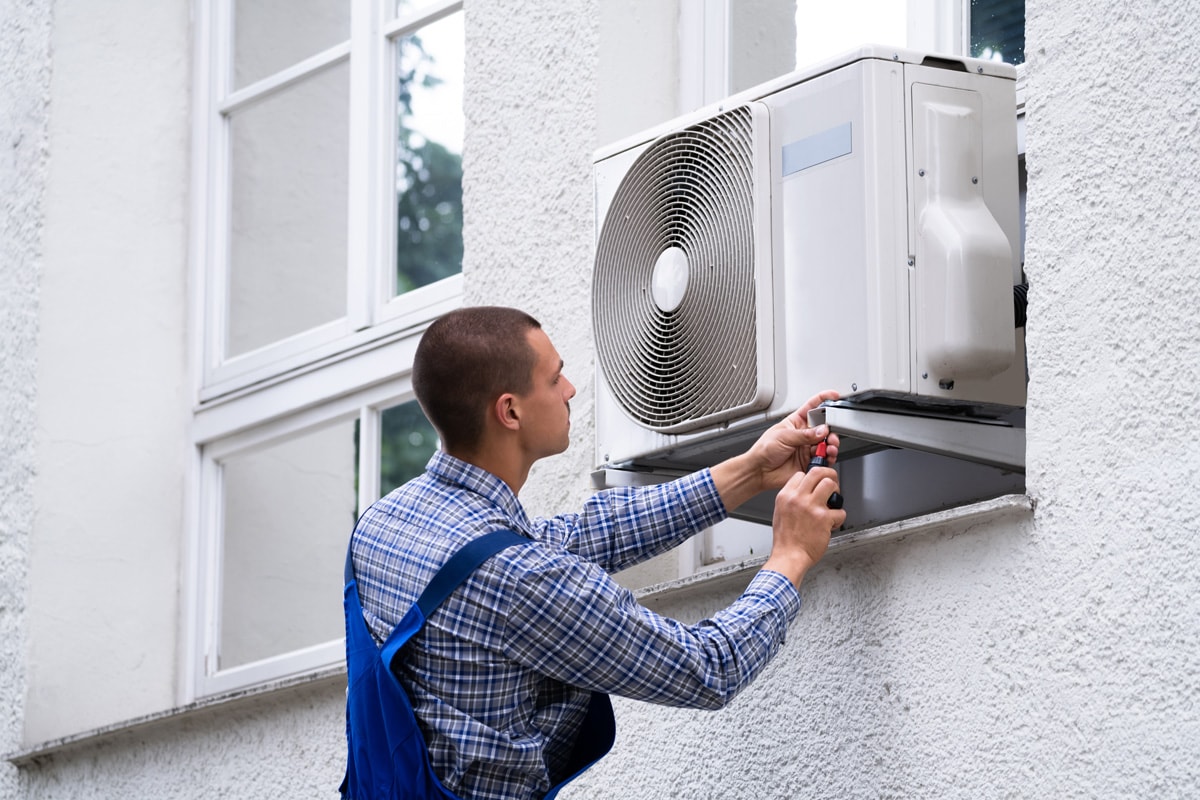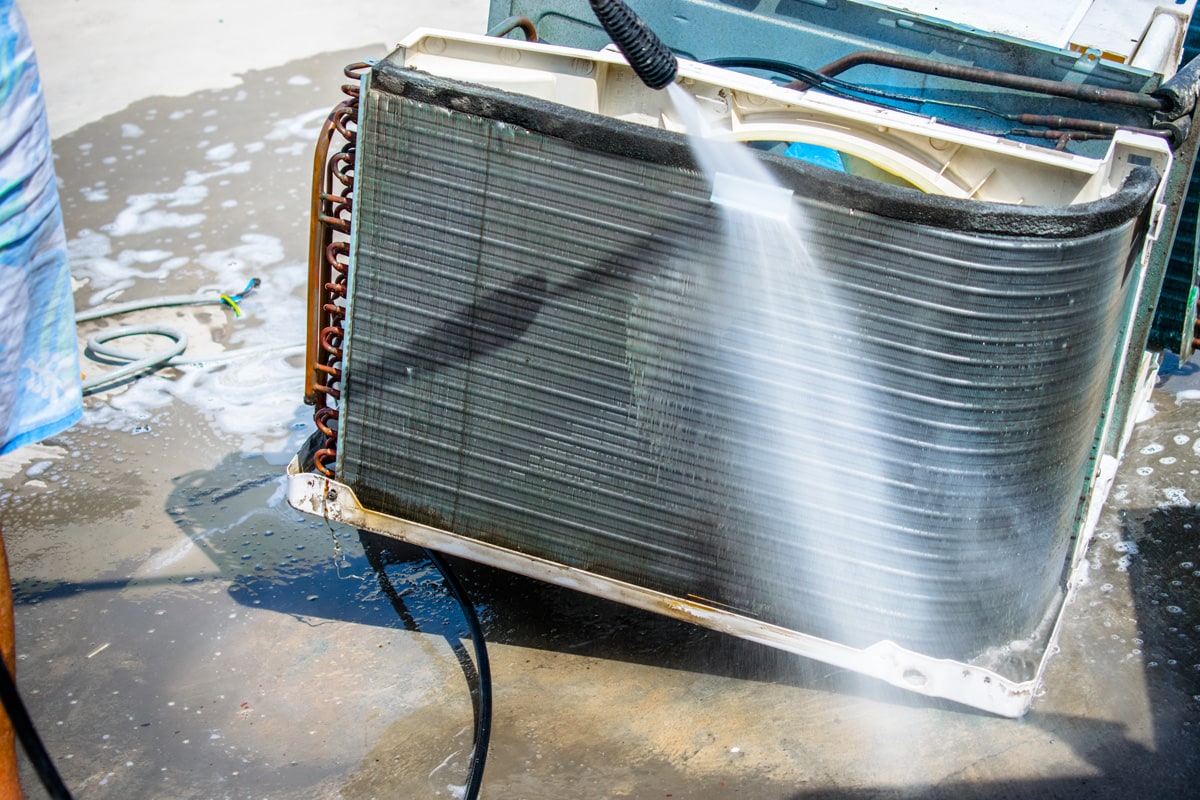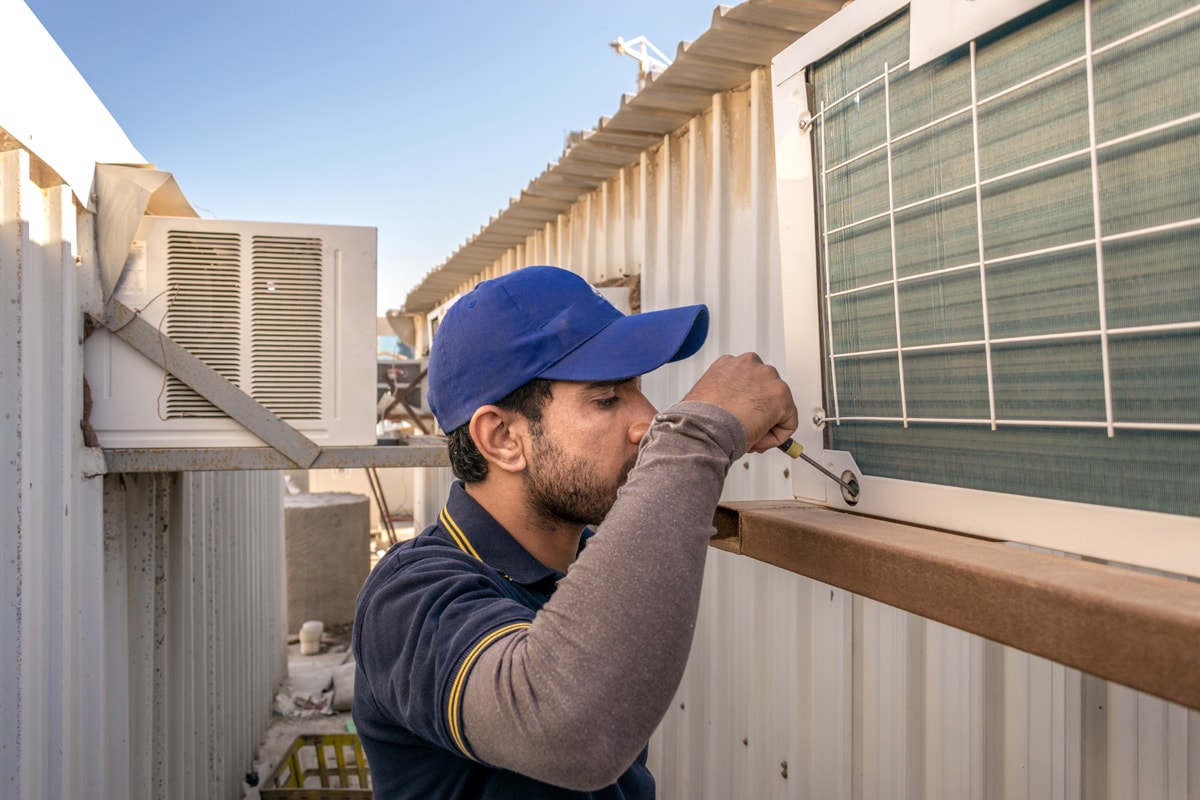Window air conditioners are a perfect solution for cooling or heating your home. However, if you have just installed a new one, you may not know where the drain hole is. To help you out, especially when you need to unclog it during regular maintenance, we have researched to show you where the condensation drain is.
Older air conditioners have condensation drain holes on the sides or underneath, while newer models do not have any drain holes.
Keep reading as we unravel where the condensate drains in a window AC are. In this post, you will find out the reason why you need to know where the drain is. You will also learn how to maintain your AC so it can last longer, and how much it will cost to fix a faulty condensate drain.

How To Locate The Condensate Drain In Your Window Air Conditioner

Some window air conditioners have condensate drains, while others do not. You may find some that have it on the sides. Meanwhile, others have it underneath, usually at the center.
Older Window Air Conditioners
Older window air conditioners have drain holes connected to a drain hose. You can find these condensate lines underneath the AC units. So, if you can’t find it in your unit, follow the hose until you locate where the hole is. But, if yours does not have a drain hose, the dripping water can direct you back to the source.
Modern Window Air Conditioners
Many modern window ACs do not have drain holes like the older models. Instead, they have a pan at the base of the AC, in which condensation drips. The fan blade inside has a slinger ring attached to it. As the water level increases, the slinger picks up water when the blade rotates, throwing the water against the condenser coils.
It’s a way of decreasing the temperature inside your AC, improving its efficiency. However, if the level of water rises too high, it will start dripping out at the back of the unit. For this to take place, you should have installed it with a slight tilt. This way, the condensation will drain outwards from the back of your unit.
How To Ensure Your Window AC Drains Properly

It’s important to ensure water drains out of your window AC. It prevents water from collecting inside your unit, which could damage it.
The following are some ways of ensuring water drains out of your window AC:
Unclog Drain Holes
Sometimes, the drain holes get clogged, preventing water from flowing out. Dust, debris, or rust can accumulate on the drain pan, blocking the hole. You can do this by using a bottle brush or a long piece of wire to clear the hole. But, before you begin, switch off the AC from the electrical outlet.
Tilt The AC At An Angle
One way of always ensuring the water inside your unit is constantly draining out is by tilting it outwards from your window. If your unit is on a higher floor, you may need some help tilting it to reduce the risk of your unit falling to the ground.
Unplug The Drain Hole
If your window AC has a drain hole that is plugged in, don’t remove it. The only time you can unplug it is when the drain pan is full, and you want the water to drain out of it.
Use A Wick To Drain Out the Water
When using this method, you’ll need a piece of cloth, gauze, or any material that can soak up water like a wick. Cut a piece of cloth into strips and push them into the pan until they touch the base.
They will soak up water that's in the pan and drip outwards. Instead of the water dripping down onto the ground, you can water a potted plant underneath.
The video below demonstrates how you can do this:
Drill A Hole
You could drill a hole in your unit, though it's not recommended. This is because it may void your warranty. However, you can enlarge the existing hole or add another one if your manual allows it.
The best way to do this is by first removing the drain pan. Drill a hole at the farthest edge, where the coils or any other component are out of reach. It shouldn’t be too small because dirt and debris will eventually clog the hole.
The video below gives you a basic overview of how to drill a hole in your window AC unit:
Open Up The AC Unit
You can also open up your unit so that it can drain better.
- Uninstall it from the window and lay it on a flat, clean surface.
- Remove the outer casing.
- Cover the fan motor and switches with a cloth.
- Tilt the unit slightly to allow the water to flow away from the electrical components.
- Use a low-pressure stream to remove dirt that is stuck on the coils.
- Unscrew the base pan or unclip it to release the pan.
- Remove the pan and spray water on it from a hose and clean it using a cloth. If the pan has too much rust, replace it with a new one.
Lastly, find two tiny tubes that run from the front of the pan, beneath the evaporator, and to the rear, where condensation is released, which is the base pan. Use a brush that fits these tubes, and swab them to remove any clogs.
Put back together the air conditioner by screwing or clipping back the base pan. Re-attach the casing. Re-install it to the window, tilt it appropriately, and secure it firmly. You can let it rest without using it for a day or two, allowing it to dry completely, including the components inside.
Check out this air conditioner drip pan on Amazon.
How To Maintain Your Window AC

You most likely spent a hefty amount to buy your window AC. For this reason, you must take good care of it so that it can serve you longer.
The following are some ways you can maintain your AC:
This is a window air conditioner that you can find on Amazon.
Clean The Filter
Dust and debris can clog your unit, preventing it from operating optimally. That is why you need to regularly clean the filter, at least every two weeks. You can replace it every three or four months if it is too rusty.
Clean The Fins
With time, the fins which are at the front and back of the coils, get covered by dust and debris. As a result, the fins become a breeding ground for mold. To clean them, you need to uninstall the unit from the window.
With soapy water in a spray bottle, spray the fins and allow them to sit for a few minutes. Using a soft brush, loosen the dirt gently. The fins that are bent can be straightened using a fin comb.
You can find this fin cleaner set on Amazon.
Clean The Drain Pan And Wash The Fans
As earlier mentioned, check if the drain pan has a clogged drain hole and unclog it. Dirt can also accumulate on the fans. To clean them, spray a detergent solution and wash out the dirt. Don’t forget to seal the electrical components to prevent water from dripping on them.
Cost Of Repairing Your Window AC

On average, repairing an air conditioner will cost around $300. Replacing a condensate drain tube costs $20, and replacing the drain pan costs between $250 to $575. A professional technician will likely charge between $50 and $100.
In Closing
The older window air conditioners have drain holes through which condensate drains out. On the other hand, the much newer models do not have drain holes. Instead, the water drains into a pan, and the water is splashed on the coils by the blades. This lowers the temperature of your unit, making it work better.
There are several methods of ensuring water drains from your unit to prevent it from being damaged by the water standing on the drain pan. As always, maintain your air conditioner well so it can remain efficient.
Below are our previous posts that may interest you:
Remove Window Air Conditioners In The Winter
Window AC Compressor Turn On Off



